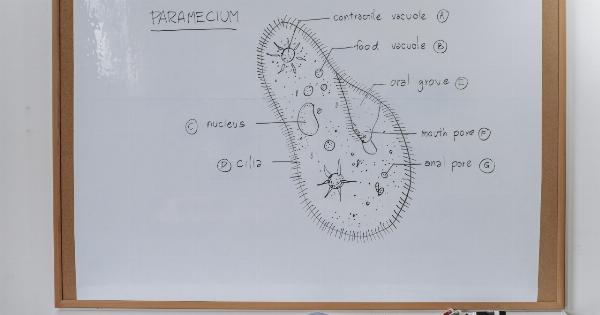Fibroids, also known as uterine fibroids or leiomyomas, are non-cancerous growths that develop in the uterus. These growths are made up of smooth muscle cells and fibrous tissue.
In some cases, fibroids can cause symptoms and complications, leading to the need for management and treatment. This article aims to provide an in-depth look at the causes, symptoms, and management options for fibroids in the uterus.
Causes of Fibroids
The exact cause of fibroids is still unknown. However, several factors have been identified that may contribute to their development:.
Hormonal Imbalances
Hormonal imbalances, specifically an overabundance of estrogen compared to progesterone, can influence the growth of fibroids.
Estrogen is known to stimulate the proliferation of cells, including those in fibroids, while progesterone can inhibit their growth. Hormonal fluctuations during a woman’s reproductive years, such as those associated with the menstrual cycle or pregnancy, can impact the formation and growth of fibroids.
Genetic Predisposition
There is evidence to suggest that genetics may play a role in the development of fibroids. Women with a family history of fibroids are at a higher risk of developing them themselves.
Certain genetic mutations and alterations in specific genes have been associated with an increased susceptibility to fibroids.
Environmental Factors
Exposure to certain environmental factors may also contribute to fibroid development. Studies have suggested that chemicals found in pesticides, herbicides, and other pollutants may disrupt hormonal balance and promote the growth of fibroids.
Furthermore, a diet high in red meat and low in fruits and vegetables has been associated with an increased risk of fibroids.
Symptoms of Fibroids
Fibroids can vary in size and location within the uterus, which can influence the presence and severity of symptoms. Some women may have small fibroids that go unnoticed and do not cause any symptoms. However, when symptoms do occur, they can include:.
Heavy or Prolonged Menstrual Bleeding
Fibroids can cause heavy or prolonged menstrual bleeding, often leading to anemia and fatigue. Women may experience blood clots and have to change sanitary products frequently. Some may find their periods lasting longer than usual.
Pelvic Pain and Pressure
Large fibroids or those in specific locations can exert pressure on surrounding organs, leading to pelvic pain and pressure. Women may experience discomfort or a feeling of fullness in the lower abdomen, as well as back pain.
Urinary and Bowel Symptoms
If fibroids press against the bladder, women may experience increased frequency in urination or difficulty fully emptying the bladder. Fibroids that press against the rectum can lead to constipation or bloating.
Infertility and Pregnancy Complications
In some cases, fibroids can interfere with fertility by obstructing the fallopian tubes or impacting the implantation process.
Additionally, pregnant women with fibroids may have a higher risk of miscarriage, preterm labor, or complications during delivery.
Management of Fibroids
The management of fibroids depends on the severity of symptoms, a woman’s age, desire for future fertility, and the size and location of the fibroids. Several treatment options are available:.
Watchful Waiting
If fibroids are small, asymptomatic, or nearing menopause, a “watchful waiting” approach may be recommended. Regular monitoring can help determine if the fibroids grow or cause any complications.
This option is often chosen when symptoms are mild, and the fibroids are not interfering with a woman’s quality of life.
Medications
Medications may be prescribed to help manage the symptoms associated with fibroids. Nonsteroidal anti-inflammatory drugs (NSAIDs) can help alleviate pain and reduce heavy menstrual bleeding.
Hormonal treatments such as birth control pills, progestin-releasing intrauterine devices (IUDs), or gonadotropin-releasing hormone (GnRH) agonists may also be used to regulate hormonal imbalances and shrink fibroids.
Minimally Invasive Procedures
For women experiencing moderate to severe symptoms, various minimally invasive procedures can be performed to treat fibroids:.
Uterine Artery Embolization (UAE)
UAE involves blocking the blood supply to fibroids, causing them to shrink and die.
This procedure is performed by an interventional radiologist and can be an effective alternative to surgery, particularly for women who wish to preserve their fertility.
Myomectomy
A myomectomy is a surgical procedure to remove fibroids while preserving the uterus.
Depending on the size, location, and number of fibroids, a myomectomy can be performed through open surgery or minimally invasive techniques, such as laparoscopy or hysteroscopy.
Endometrial Ablation
Endometrial ablation is a procedure used to destroy the lining of the uterus, reducing menstrual bleeding. This treatment is typically recommended for women who have completed their childbearing and do not wish to undergo a hysterectomy.
Hysterectomy
A hysterectomy involves the surgical removal of the uterus. This procedure is considered a definitive treatment for fibroids, as it eliminates the possibility of fibroid recurrence.
However, it is only recommended for women who have completed their childbearing or have severe symptoms that do not respond to other treatments.
Conclusion
Fibroids in the uterus can cause a range of symptoms and complications, affecting a woman’s quality of life and fertility.
While the exact cause of fibroids remains unknown, hormonal imbalances, genetics, and environmental factors are believed to contribute to their development. Treatment options range from watchful waiting and medications to minimally invasive procedures and surgery, depending on the severity of symptoms and a woman’s reproductive goals.
Consulting with a healthcare professional is crucial to determine the most appropriate management plan for each individual.


























